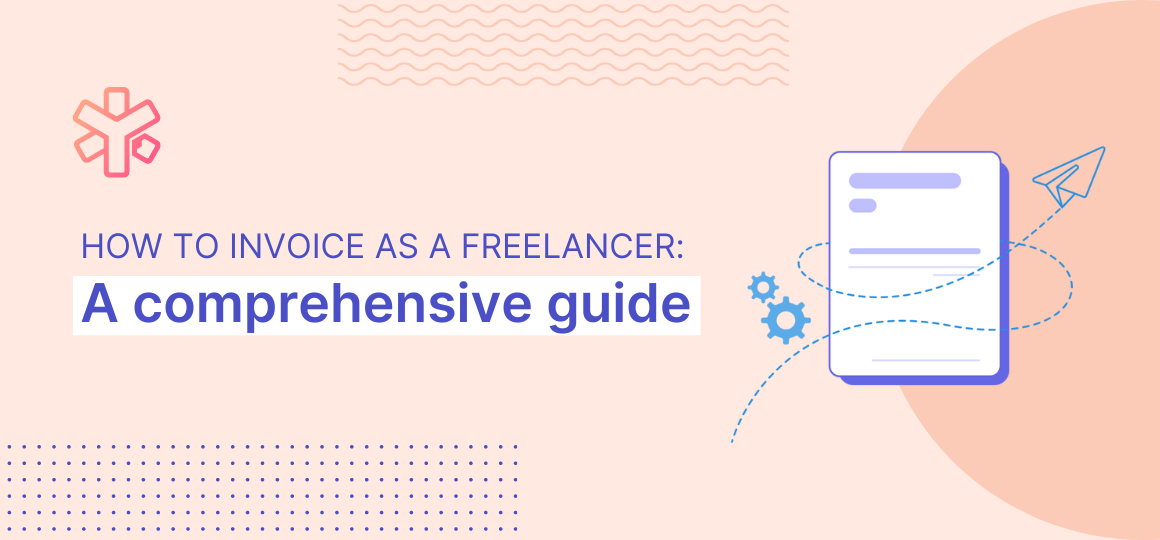As a freelancer, mastering the art of invoicing is crucial for maintaining a steady cash flow and running a successful business. Whether you're a seasoned professional or just starting your freelance journey, understanding how to create and manage invoices effectively can make a significant difference in your financial stability and client relationships. In this comprehensive guide, we'll explore the ins and outs of invoicing for freelancers, covering everything from creating professional invoices to managing payment terms and dealing with late payments.
The importance of proper invoicing
Before diving into the specifics of how to invoice as a freelancer, it's essential to understand why proper invoicing is so critical:
- Ensures timely payments: Well-structured invoices with clear payment terms help clients understand when and how to pay you, reducing delays and improving cash flow.
- Maintains professionalism: Professional invoices reflect positively on your business, enhancing your reputation and credibility with clients.
- Provides legal protection: Invoices serve as legal documents, protecting both you and your clients in case of disputes or audits.
- Facilitates tax compliance: Accurate invoicing makes it easier to track income and expenses, simplifying tax preparation and ensuring compliance with tax regulations.
- Improves financial management: Consistent invoicing practices help you monitor your business's financial health and make informed decisions about your freelance career.
Creating a professional invoice
Essential elements of a freelance invoice
When creating an invoice as a freelancer, it's crucial to include all the necessary information to ensure prompt payment and maintain a professional image. Here are the key elements every freelance invoice should include:
1. Your business information
Start by clearly displaying your business details at the top of the invoice:
- Your full name or business name
- Address
- Phone number
- Email address
- Website (if applicable)
- Any relevant business identification numbers (e.g., VAT number, company registration number)
2. Client information
Include your client's details to ensure the invoice reaches the right person or department:
- Client's name or company name
- Contact person's name (if different from the company name)
- Client's address
- Client's phone number and email address
3. Invoice number and date
Assign a unique invoice number and include the date of issue:
- Use a consistent numbering system (e.g., INV-001, INV-002)
- Clearly state the invoice date
4. Project details
Provide a clear description of the services rendered:
- Project name or brief description
- Detailed breakdown of services provided
- Quantity or hours worked (if applicable)
- Rate per hour or per project
- Total amount for each service
5. Payment terms
Clearly state your payment terms to avoid any confusion:
- Due date (e.g., "Due upon receipt" or "Net 30")
- Accepted payment methods
- Late payment fees or policies (if applicable)
6. Total amount due
Summarise the financial information:
- Subtotal of all services
- Any applicable taxes
- Discounts (if any)
- Total amount due (in bold or larger font)
7. Additional information
Include any other relevant details:
- Your preferred payment methods (e.g., bank transfer, PayPal)
- Bank account details (for direct transfers)
- Any specific instructions or notes for the client
Best practices for creating professional invoices
Now that we've covered the essential elements, let's explore some best practices to elevate your invoicing game:
- Use a consistent design: Create a template with your branding elements (logo, colours, fonts) for a polished, professional look.
- Keep it simple and clear: Avoid cluttering your invoice with unnecessary information. Aim for a clean, easy-to-read layout.
- Use clear language: Avoid jargon or technical terms that your client may not understand. Be specific and concise in your descriptions.
- Proofread carefully: Check for any errors in spelling, calculations, or client information before sending the invoice.
- Consider using invoicing software: Tools like FreshBooks, QuickBooks, or Xero can automate much of the invoicing process and provide professional-looking templates.
- Include your terms and conditions: If you have specific policies regarding revisions, copyright, or other aspects of your work, consider including them on your invoice or referencing them with a link.
Managing payment terms and expectations
Setting clear payment terms
Establishing clear payment terms is crucial for maintaining a healthy cash flow and avoiding payment disputes. Consider the following when setting your payment terms:
- Payment deadline: Decide whether you prefer immediate payment (due upon receipt) or if you're willing to extend credit (e.g., Net 15, Net 30).
- Deposits for large projects: For substantial projects, consider requesting a deposit upfront (e.g., 50% before starting work).
- Milestone payments: For long-term projects, break payments into milestones to ensure a steady cash flow.
- Late payment fees: Clearly state any penalties for late payments (e.g., 1.5% interest per month after the due date).
- Early payment discounts: Consider offering a small discount for clients who pay before the due date to incentivise prompt payments.
Communicating payment expectations
Clear communication about payment expectations can help prevent misunderstandings and delayed payments:
- Discuss payment terms upfront: Before starting a project, ensure your client understands and agrees to your payment terms.
- Include payment terms in your contract: Incorporate your payment terms into your freelance contract for legal protection.
- Send invoices promptly: Invoice immediately upon project completion or according to your agreed-upon schedule.
- Follow up politely: Send friendly reminders a few days before the payment is due and follow up promptly if a payment is late.
Dealing with late payments
Strategies for handling overdue invoices
Despite your best efforts, you may occasionally encounter late payments. Here are some strategies to handle these situations professionally:
- Send reminders: Set up an automated system to send polite reminders at regular intervals (e.g., 3 days before due date, on the due date, 7 days after).
- Pick up the phone: If email reminders aren't effective, a personal phone call can often resolve the issue quickly.
- Offer payment plans: For clients experiencing temporary financial difficulties, consider offering a payment plan to recover your fees over time.
- Implement late fees: Enforce your late payment policies consistently to discourage future late payments.
- Consider factoring: For large invoices, you might explore invoice factoring services that pay you upfront and collect from your client.
- Seek legal advice: As a last resort, consult with a legal professional about your options for recovering payment.
Leveraging technology for efficient invoicing
Invoicing software and tools
In today's digital age, numerous tools can streamline your invoicing process:
- Cloud-based accounting software: Platforms like QuickBooks Online, Xero, or FreshBooks offer comprehensive invoicing and accounting features.
- Invoicing apps: Mobile apps like Invoice Ninja or Zoho Invoice allow you to create and send invoices on the go.
- Time-tracking tools: Applications like Harvest or Toggl can integrate with invoicing software to automatically generate invoices based on tracked time.
- Payment gateways: Services like Stripe or PayPal can be integrated into your invoices to allow clients to pay online instantly.
- Contract and proposal software: Tools like Bonsai or AND CO can help you create proposals that seamlessly convert into invoices once accepted.
When choosing invoicing tools, consider factors such as ease of use, integration with other software you use, cost, and scalability as your freelance business grows.
Conclusion
Mastering the art of invoicing is a crucial skill for any freelancer looking to build a successful and sustainable business. By creating professional invoices, setting clear payment terms, and leveraging technology to streamline your processes, you can ensure a steady cash flow and maintain positive relationships with your clients. Remember, effective invoicing is not just about getting paid – it's about demonstrating your professionalism and value as a freelancer.
As you refine your invoicing practices, consider exploring comprehensive freelance management platforms that can handle not only invoicing but also other aspects of your freelance business. For instance, YunoJuno offers features that streamline the entire freelance workflow, from sourcing projects to managing payments across multiple countries. By automating these processes, you can focus more on delivering exceptional work to your clients and less on administrative tasks.
Ultimately, the key to successful invoicing lies in consistency, clarity, and professionalism. By following the guidelines and best practices outlined in this article, you'll be well-equipped to handle the financial aspects of your freelance career with confidence and ease.







